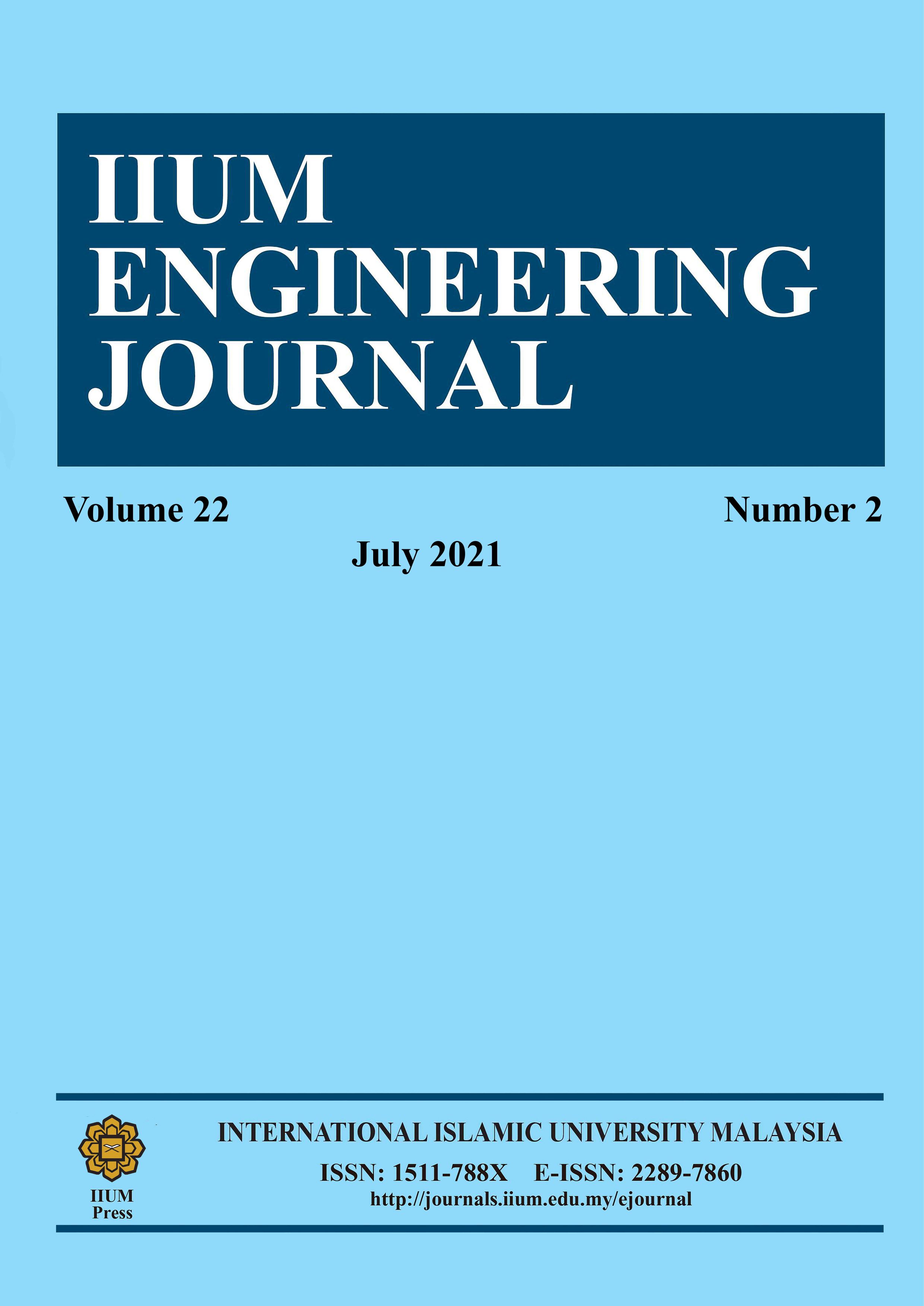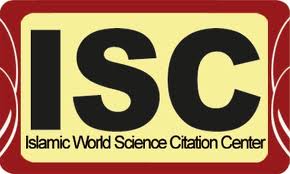ENHANCEMENT OF THE CALORIFIC VALUE OF EM1707PTY FRUIT BUNCH (EFB) BY ADDING MUNICIPAL SOLID WASTE AS SOLID FUEL IN GASIFICATION PROCESS
DOI:
https://doi.org/10.31436/iiumej.v22i2.1566Keywords:
KEY WORDS: Municipal solid waste; empty fruit bunch; calorific value; energy; Refuse Derived FuelAbstract
Empty fruit bunch (EFB), a biomass-based waste, was deemed a potential replacement for fossil fuel. It is renewable and carbon neutral. The efficient management of this potential energy will help to deal with the problem associated with fossil fuels. However, a key parameter for evaluating the quality of raw material (EFB) as a fuel in energy applications is the calorific value (CV). When this CV is low, then its potential utilization as feedstock will be restricted. To tackle this shortcoming, we propose to add municipal solid waste to enhance energetic value. Thus, two major issues will be solved: managing solid residues and contributing an alternative energy source. This study aimed to investigate the possibility of mixing EFB and municipal solid waste (MSW) to make clean energy that is conscious of the environment (climate change) and sustainable development. The selected MSW, comprising of plastics, textiles, foam, and cardboard, were mixed, with EFB at various ratios. Proximate analysis was used to determine moisture content, ash, volatiles, and fixed carbon, whilst elemental analysis, is used to determine CHNS/O for MSW, EFB and their various mixtures. The CV of each element was also measured. The research revealed a significant increase in the calorific value of EFB by mixing it with MSW according to MSW/EFB ratios: 0.25; 0.42; 0.66; 1.00 and 1.50 the corresponding calorific values in (MJ/kg) were 19.77; 21.22; 22.67; 27.04 and 28.47 respectively. While the calorific value of pure EFB was 16.86 MJ/kg, the mixing of EFB with MSW promoted the increase in the CV of EFB to an average of 23.83MJ/kg. Another potential environmental benefit of applying this likely fuel was the low chlorine (0.21 wt. % to 0.95 wt. %) and sulfur concentrations (0.041 wt. % to 0.078 wt.%). This potential fuel could be used as solid refuse fuel (SRF) or refuse-derived fuel (RDF) in a pyrolysis or gasification process with little to no environmental effects.
ABSTRAK: Tandan buah kosong (EFB), sisa berasaskan biojisim, adalah berpotensi sebagai pengganti bahan bakar fosil. Ia boleh diperbaharui dan karbon neutral. Pengurusan berkesan pada potensi tenaga ini dapat membantu mengatasi masalah melibatkan bahan bakar fosil. Namun, kunci parameter bagi menilai kualiti bahan mentah (EFB) sebagai bahan bakar dalam aplikasi tenaga adalah nilai kalori (CV). Apabila CV rendah, potensi menjadi stok suapan adalah terhad. Sebagai penyelesaian, kajian ini mencadangkan sisa pepejal bandaran ditambah bagi meningkatkan nilai tenaga. Oleh itu, dua isu besar dapat diselesaikan: mengurus sisa pepejal dan menambah sumber tenaga alternatif. Kajian ini bertujuan mengkaji potensi campuran tandan buah kosong (EFB) dan sisa pepejal bandaran (MSW) bagi menghasilkan tenaga bersih dari sudut persekitaran (perubahan iklim) dan pembangunan lestari. Pemilihan MSW, terdiri daripada plastik, tekstil, gabus dan kadbod, dicampurlan dengan pelbagai nisbah EFB. Analisis proksimat telah digunakan bagi mendapatkan kandungan kelembapan, abu, ruapan, dan karbon tetap, manakala analisis asas telah digunakan bagi mendapatkan CHNS/O bersama MSW, EFB dan pelbagai campuran lain. Nilai kalori (CV) setiap elemen turut diukur. Dapatan kajian menunjukkan penambahan ketara dalam nilai kalori EFB dengan campuran bersama MSW berdasarkan nisbah MSW/EFB 0.25; 0.42; 0.66; 1.00 dan 1.50 nilai kalori sepadan (MJ/kg) adalah 19.77; 21.22; 22.67; 27.04 dan 28.47 masing-masing. Manakala nilai kalori EFB tulen adalah 16.86 MJ/kg, campuran EFB dan MSW menunjukkan kenaikan CV dengan EFB pada purata 23.83MJ/kg. Antara potensi semula jadi lain adalah dengan mencampurkan bahan bakar ini dengan kalori rendah (0.21 wt. % kepada 0.95 wt. %) dan kepekatan sulfur (0.041 wt. % kepada 0.078 wt.%). Bahan bakar ini berpotensi sebagai bahan bakar pepejal sampah (SRF) atau bahan bakar yang terhasil dari pepejal sampah (RDF) melalui proses pirolisis atau proses gasifikasi yang sedikit atau tiada kesan langsung terhadap persekitaran.
Downloads
Metrics
References
] Kumar A, Samadder SR. (2017) A review on technological options of waste to energy for effective management of municipal solid waste. Waste Management, 69: 407-422. https://doi.org/10.1016/j.wasman.2017.08.046 DOI: https://doi.org/10.1016/j.wasman.2017.08.046
Liu Z. (2019) Gasification of municipal solid wastes: a review on the tar yields. Energy Sources, Part A: Recovery, Utilization and Environmental Effects, 41(11): 1296-1304. https://doi.org/10.1080/15567036.2018.1548508 DOI: https://doi.org/10.1080/15567036.2018.1548508
Lombardi L, Carnevale E, Corti A. (2014) A review of technologies and performances of thermal treatment systems for energy recovery from waste. Waste Management, 37: 26-44. https://doi.org/10.1016/j.wasman.2014.11.010 DOI: https://doi.org/10.1016/j.wasman.2014.11.010
Makarichi L, Jutidamrongphan W, Techato K. (2018) The evolution of waste-to-energy incineration: A review. Renewable and Sustainable Energy Reviews, 91: 812–821. https://doi.org/10.1016/j.rser.2018.04.088 DOI: https://doi.org/10.1016/j.rser.2018.04.088
Massarutto A. (2014) Economic aspects of thermal treatment of solid waste in a sustainable WM system. Waste Management. https://doi.org/10.1016/j.wasman.2014.08.024 DOI: https://doi.org/10.1016/j.wasman.2014.08.024
Beyene HD, Werkneh AA, Ambaye TG. (2018) Current updates on waste to energy (WtE) technologies: A review. Renewable Energy Focus, 24: 1-11. https://doi.org/10.1016/j.ref.2017.11.001 DOI: https://doi.org/10.1016/j.ref.2017.11.001
Sikarwar VS, Zhao M, Clough P, Yao J, Zhong X, Memon MZ, Shah N, Anthony EJ, Fennell PS. (2016) An overview of advances in biomass gasification. Energy and Environmental Science, 9(10): 2939-2977. https://doi.org/10.1039/c6ee00935b DOI: https://doi.org/10.1039/C6EE00935B
Vaish B, Sharma B, Srivastava V, Singh P, Ibrahim MH, Singh RP. (2019) Energy recovery potential and environmental impact of gasification for municipal solid waste. Biofuels, 10(1): 87-100. https://doi.org/10.1080/17597269.2017.1368061 DOI: https://doi.org/10.1080/17597269.2017.1368061
Nobre C, Gonçalves M, Vilarinho C. (2019) A brief assessment on the application of torrefaction and carbonization for refuse derived fuel Upgrading. Lecture Notes in Electrical Engineering, 505: 633-640. https://doi.org/10.1007/978-3-319-91334-6_86 DOI: https://doi.org/10.1007/978-3-319-91334-6_86
He P, Chen L, Shao L, Zhang H, Lü F. (2019) Municipal solid waste (MSW) landfill: A source of microplastics? Evidence of microplastics in landfill leachate. Water Research, 159: 38-45. https://doi.org/10.1016/j.watres.2019.04.060 DOI: https://doi.org/10.1016/j.watres.2019.04.060
Brunner PH, Rechberger H. (2015) Waste to energy – key element for sustainable waste management. Waste Management, 37: 3-12. https://doi.org/10.1016/j.wasman.2014.02.003 DOI: https://doi.org/10.1016/j.wasman.2014.02.003
Chol ON, Song PH, Chol SY, Hyok RY, Nam KY. (2018) Environmental effects A feasibility study of energy recovery of RDF from municipal solid waste. Energy Sources, Part A: Recovery, Utilization, and Environmental Effects, 40(24): 2914-2922. https://doi.org/10.1080/15567036.2018.1514431 DOI: https://doi.org/10.1080/15567036.2018.1514431
De Gisi S, Chiarelli A, Tagliente L, Notarnicola M. (2018) Energy, environmental and operation aspects of a SRF-fired fluidized bed waste-to-energy plant. Waste Management, 73: 271-286. https://doi.org/10.1016/j.wasman.2017.04.044 DOI: https://doi.org/10.1016/j.wasman.2017.04.044
Elisabete M, Brás I, Silva ME. (2017) Refuse Derived Fuel from Municipal Solid Waste rejected fractions- Case Study The 15th International a Symposium on District Heating and Cooling. Energy Procedia, 120: 349-356. https://doi.org/10.1016/j.egypro.2017.07.227 DOI: https://doi.org/10.1016/j.egypro.2017.07.227
Farzad S, Mandegari MA, Görgens JF. (2016) A critical review on biomass gasification, co-gasification, and their environmental assessments. Biofuel Research Journal, 3(4): 483-495. https://doi.org/10.18331/BRJ2016.3.4.3 DOI: https://doi.org/10.18331/BRJ2016.3.4.3
Garcés D, Díaz E, Sastre H, Ordóñez S, González-lafuente JM. (2015) Evaluation of the potential of different high calorific waste fractions for the preparation of solid recovered fuels. Waste Management, 47(B): 164-173. https://doi.org/10.1016/j.wasman.2015.08.029 DOI: https://doi.org/10.1016/j.wasman.2015.08.029
Hamzah, N., Tokimatsu, K., & Yoshikawa, K. (2019). Solid fuel from oil palm biomass residues and municipal solid waste by hydrothermal treatment for electrical power generation in Malaysia: A review. Sustainability (Switzerland), 11(4): 1-23. https://doi.org/10.3390/su11041060 DOI: https://doi.org/10.3390/su11041060
Abdullah N, Sulaiman F, Taib RM. (2013) Characterization of banana (Musa spp.) plantation wastes as a potential renewable energy source. AIP Conference Proceedings, 1528: 325-330. https://doi.org/10.1063/1.4803618 DOI: https://doi.org/10.1063/1.4803618
Aluri S, Syed A, Flick DW, Muzzy JD, Sievers C. (2018) Pyrolysis and gasification studies of model refuse derived fuel (RDF) using thermogravimetric analysis. Fuel Processing Technology, 179: 154-166. https://doi.org/10.1016/j.fuproc.2018.06.010 DOI: https://doi.org/10.1016/j.fuproc.2018.06.010
Nizami AS, Shahzad K, Rehan M, Ouda OKM, Khan MZ, Ismail IMI, Almeelbi T, Basahi J. M, Demirbas A. (2017) Developing waste biorefinery in Makkah: A way forward to convert urban waste into renewable energy. Applied Energy, 186: 189-196. https://doi.org/10.1016/j.apenergy.2016.04.116 DOI: https://doi.org/10.1016/j.apenergy.2016.04.116
Ouda OKM, Raza SA, Nizami AS, Rehan M, Al-waked R, Korres NE. (2016) Waste to energy potential: A case study of Saudi Arabia. Renewable and Sustainable Energy Reviews, 61: 328-340. https://doi.org/10.1016/j.rser.2016.04.005 DOI: https://doi.org/10.1016/j.rser.2016.04.005
Komilis D, Kissas K, Symeonidis A. (2014) Effect of organic matter and moisture on the calorific value of solid wastes: An update of the Tanner diagram. Waste Management, 34(2): 249-255. https://doi.org/10.1016/j.wasman.2013.09.023 DOI: https://doi.org/10.1016/j.wasman.2013.09.023
Afzanizam N, Nazri M, Jaafar M, Tung C, Johan N. (2015) A review of palm oil biomass as a feedstock for syngas fuel technology. Jurnal Teknologi, 5: 13-18.
Onoja E, Chandren S, Abdul Razak FI, Mahat NA, Wahab RA. (2018) Oil alm (Elaeis guineensis) biomass in Malaysia: The present and future prospects. Waste and Biomass Valorization, 10: 2099-2117. https://doi.org/10.1007/s12649-018-0258-1 DOI: https://doi.org/10.1007/s12649-018-0258-1
Downloads
Published
How to Cite
Issue
Section
License
Copyright (c) 2021 IIUM Press

This work is licensed under a Creative Commons Attribution-NonCommercial 4.0 International License.






















